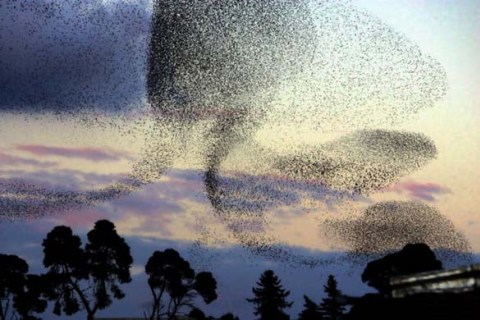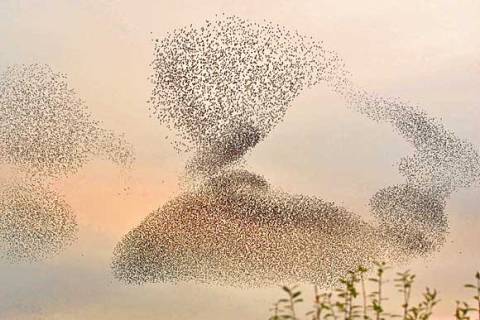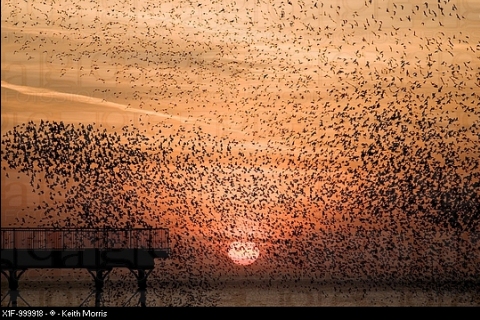It is now late autumn, with winter just round the corner. It is that time of the year when flocks of starlings create incredible aerobatic displays, swirling through the sky in magnificent ballets that almost seem choreographed.
This dazzling display of avian behavior is known as a murmuration, a word that perfectly describes the rustle of thousands of pairs of wings. It is one of the most spectacular displays in the natural world, as the flock changes shape, one minute like a colossal wisp of smoke, the next a tornado, the next a thundercloud blocking the light. The collective dance of the birds is truly a sight to behold.
Murmurations typically occur in late autumn, as the starlings return to roosts after long-distance foraging expeditions. The birds may feed up to 20 miles from their winter roost but return each evening. The dusk flights can involve tens of thousands of birds and what’s mystifying is how they can swirl about so swiftly and in such unison without colliding into one another.
Some experts believe the starlings flock together and fly in this manner for several reasons – a means of defense against predators such as peregrine falcons, information exchange (if some come back from a good feeding area others may learn of it) and warmth at night through roosting together.
No one can yet explain how starlings seem to be able to process information and act on it so quickly. It’s precisely the lack of lag between the birds’ movements that make the flocks so astonishing.
A murmuration was captured by Sophie Windsor Clive and Liberty Smith on a canoe trip atop Ireland’s River Shannon last week. The 2-minute clip began circulating on the Internet, to popular acclaim.
Watch the video below and be awed!
 CY@CY Says Welcome to my dreamscape. Where a Lim is also a Ling.
CY@CY Says Welcome to my dreamscape. Where a Lim is also a Ling.




